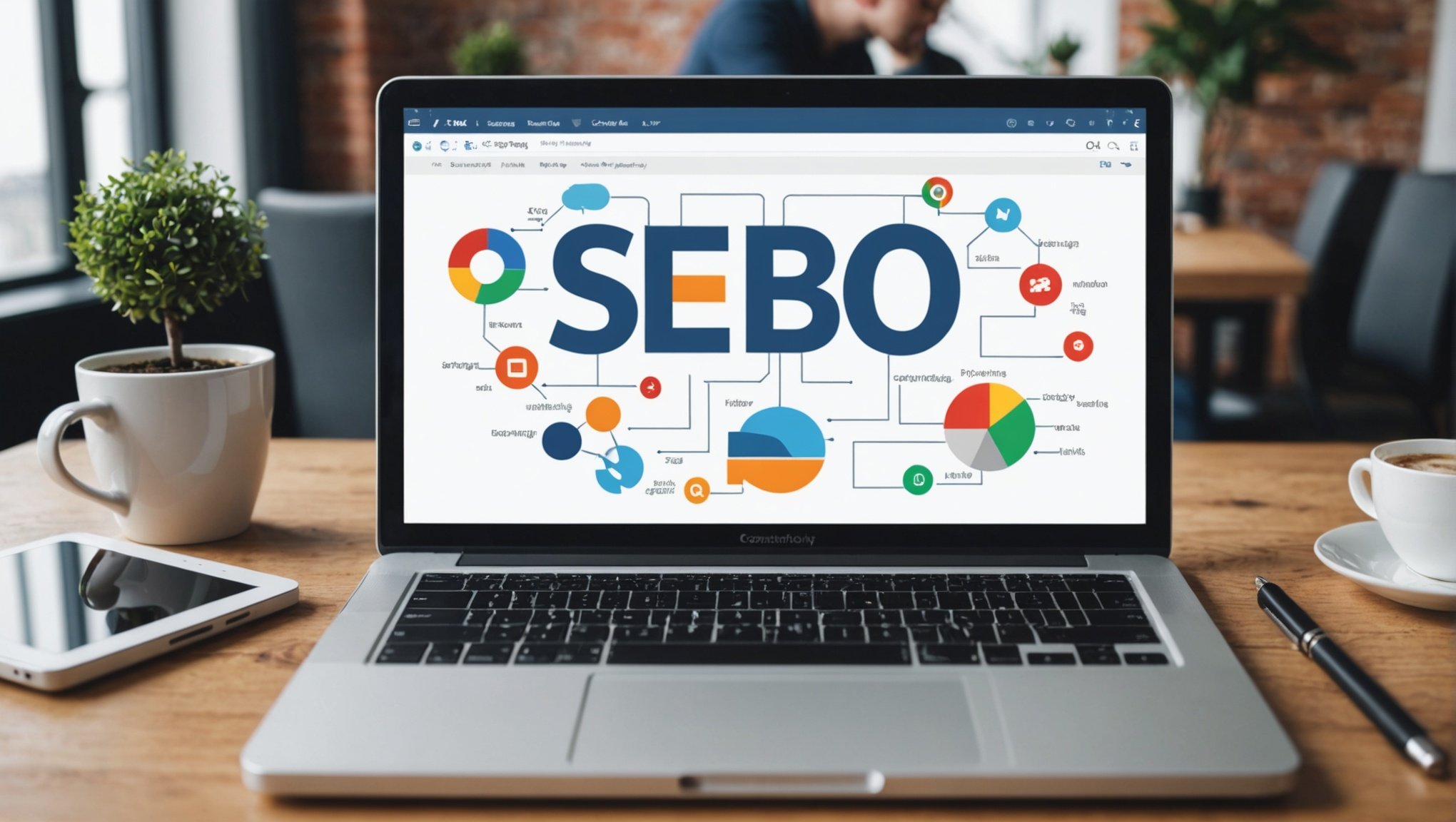Understanding SEO for Technology Blogs
In the bustling landscape of UK tech blogging, achieving digital visibility is paramount. With the sheer number of technology blogs vying for attention, having a strategic approach to SEO for tech blogs is crucial. By adhering to core SEO principles, bloggers can significantly enhance their online presence.
Importance of SEO in Tech Niche
The tech niche is fiercely competitive, with countless blogs offering insights, reviews, and analyses. To stand out, effectively leveraging SEO is essential. It not only increases your blog’s reach but also ensures the content reaches the right audience. This means more engagement, trust, and ultimately, authority in the tech community.
Have you seen this : Boosting Member Engagement: Innovative Ways UK Fitness Centers Can Leverage Wearable Technology
Key SEO Principles for Tech Blogs
A few standout SEO principles will boost your blog’s performance. High-quality, original content is a cornerstone, optimized with relevant keywords without overstuffing. Implementing meta tags and descriptions enriches search engine understanding. Additionally, mobile optimization and fast load times enhance user experience.
Understanding Search Intent
Understanding search intent is vital for crafting content strategies that resonate with tech audiences. Recognizing what users are seeking—whether it’s how-to guides, reviews, or product comparisons—guides content creation. Aligning this with optimized SEO strategies ensures your blog meets readers’ demands effectively.
Also to read : Crafting a Scalable E-commerce Solution for Independent Merchants in the UK: A Comprehensive Guide
Keyword Research Strategies
When delving into keyword research for the UK tech market, identifying high-value keywords is paramount. High-value keywords are those which not only attract traffic but are also closely aligned with the niche needs of the UK technology sector. This involves understanding local search behaviours and trends.
To enhance effectiveness in keyword research, numerous tools can be employed. Tools like Google Keyword Planner, SEMrush, and Ahrefs provide comprehensive analyses of keyword search volumes, competition levels, and trends. These tools facilitate the identification of both popular and niche keywords that resonate within the market.
Emphasising the importance of long-tail keywords is crucial for marketers aiming to reach more targeted audiences. Long-tail keywords, which are longer and more specific phrases, generally face less competition compared to single-word keywords. This specificity can result in higher conversion rates as they attract users who are further along in the purchasing process or have a clearer intent. For instance, instead of a general term like “UK tech,” one might use “emerging tech startups in London,” targeting a more precise audience.
Focusing on long-tail keywords also allows businesses to tap into diverse sectors of the tech market, adapting their strategies to suit emerging trends and shifting demands.
On-Page Optimization Techniques
Navigating the intricacies of on-page SEO can feel overwhelming, especially when optimizing a tech blog. However, prioritizing key elements such as meta tags can significantly enhance visibility.
Key Elements of On-Page SEO for Tech Blogs
For tech blogs, meta tags like meta descriptions and title tags are indispensable. Clear meta descriptions attract users by concisely summarizing page content, while well-crafted title tags improve search engine rankings.
Effective Use of Headers and Meta Descriptions
In on-page SEO, structuring content with headers aids both readers and search engines. Headers should encapsulate key points and flow logically. Simultaneously, compelling meta descriptions can boost click-through rates, influencing overall SEO outcomes.
Impact of Content Formatting and Internal Linking
Content formatting, including bullet points and bold text, enhances readability, thereby keeping visitors engaged longer. Additionally, strategic internal linking strengthens SEO performance by guiding readers to related topics within the tech blog. This practice not only extends user engagement but also distributes page authority effectively across the site.
Content Creation Best Practices
Creating effective content that captivates your audience requires a thoughtful approach involving audience engagement and innovation. For tech-savvy readers, it is crucial to craft high-quality and informative pieces that not only educate but also resonate with their interests.
Crafting Informativeness
When aiming to engage a tech audience, balance is key. Incorporate technical detail to convey depth and reliability, yet ensure it remains digestible. This might involve breaking down complex jargon into simple concepts or using real-world examples that your audience will find relatable.
Balancing Detail and Accessibility
Striking a balance between intricate tech details and readability can significantly boost audience engagement. One strategy is to format content in a way that’s easy to scan, using subheadings and bullet points where appropriate.
Engaging Techniques
To maintain reader interest and minimize bounce rates, consider the following:
- Begin with compelling questions or statements.
- Use multimedia elements, like infographics, to support textual information.
- Regularly update your tech content to reflect the latest developments, ensuring it remains relevant and engaging.
These practices, when applied effectively, can significantly enhance reader satisfaction and interaction.
Building Backlinks for Authority
Establishing a robust backlink profile is fundamental for enhancing a blog’s authority, especially in the competitive tech space. Backlink strategies that focus on acquiring links from authority websites can significantly impact your blog’s visibility and credibility.
Here are some effective strategies for acquiring high-quality backlinks:
-
Guest Blogging: Contribute insightful articles to authority websites within the tech industry. This not only provides a platform for reaching a wider audience but also earns valuable backlinks.
-
Collaboration and Networking: Forge partnerships with industry leaders and participate in collaborative content creation. Networking within tech forums and events can lead to natural backlink opportunities.
-
Digital PR and Case Studies: Develop compelling press releases and detailed case studies on tech innovations. This encourages sharing by reputable sites, thereby creating a string of backlinks.
For instance, a successful campaign in the UK tech sector involved a start-up collaborating with well-known tech influencers. This resulted in a significant increase in backlinks, boosting their site’s authority.
By implementing these backlink strategies, blogs can attain a higher domain authority, thus improving their chances of ranking well in search engine results. Emphasizing quality over quantity in link building can lead to sustained growth and visibility in the tech industry.
Local SEO Techniques for Tech Blogs
In today’s digital landscape, focusing on local SEO is crucial for tech blogs aiming to reach a UK tech audience. Tailoring your SEO strategy to cater to local audiences in the UK can enhance visibility and engagement. This process begins with incorporating specific local search strategies.
One pivotal aspect of enhancing local SEO is effectively utilising Google My Business. This platform allows tech bloggers to manage their online presence across Google’s search engine, ensuring that when local users search for relevant information, your blog appears prominently in the results. Accurate and updated information in your Google My Business profile can lead to increased local visibility.
Optimising content for local search terms is another significant approach. This involves integrating geographically-relevant keywords naturally within your blog content. Additionally, creating high-quality content that resonates with both local tech enthusiasts and broader audiences can improve search results.
Local citations are references to your blog’s name, address, and phone number across various online platforms. These citations contribute to higher search rankings, as they build credibility and bolster your blog’s local online footprint.
Implement these strategies to position your tech blog effectively within the UK market, ensuring that your content reaches and resonates with your target local audience.
Tools and Resources for Effective SEO Implementation
Effective SEO implementation requires a strategic approach using the right SEO tools and analytics. These tools are essential for monitoring SEO performance, helping to track metrics such as keyword rankings, website traffic, and user engagement. Popular SEO tools like Ahrefs, SEMrush, and Google Analytics offer comprehensive insights that inform content strategies and highlight areas for improvement.
By utilizing analytics, you can directly influence content strategies. Analytics provide data-driven insights, allowing for content adjustments that boost search engine rankings and user engagement. For instance, understanding which keywords drive the most traffic can guide the creation of targeted content that resonates with your audience, thereby enhancing visibility and reach.
Staying updated on SEO trends is crucial as the tech industry evolves rapidly. Tech blogging resources and forums like Moz Blog and Search Engine Journal offer invaluable information, keeping you abreast of the latest industry shifts and algorithm updates. Engaging with these resources regularly ensures that SEO tactics remain relevant and effective in a competitive digital landscape.
Incorporating these tools and resources into your SEO strategy not only enhances performance but also builds long-term success through informed, data-backed decisions.
















